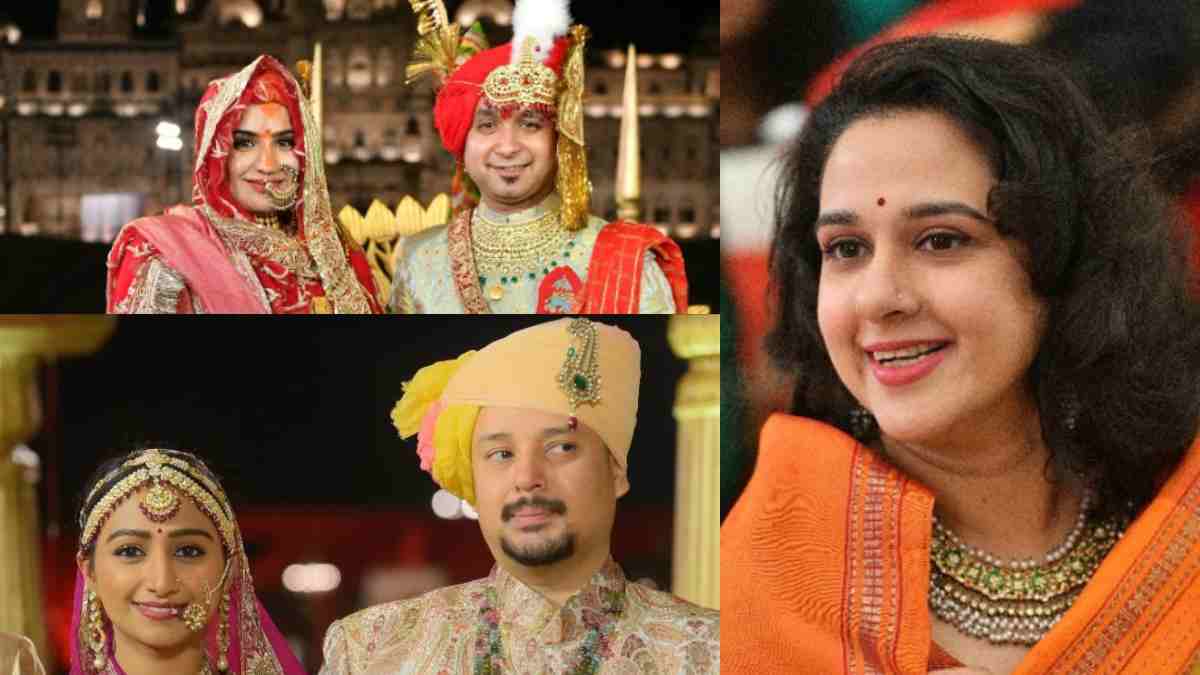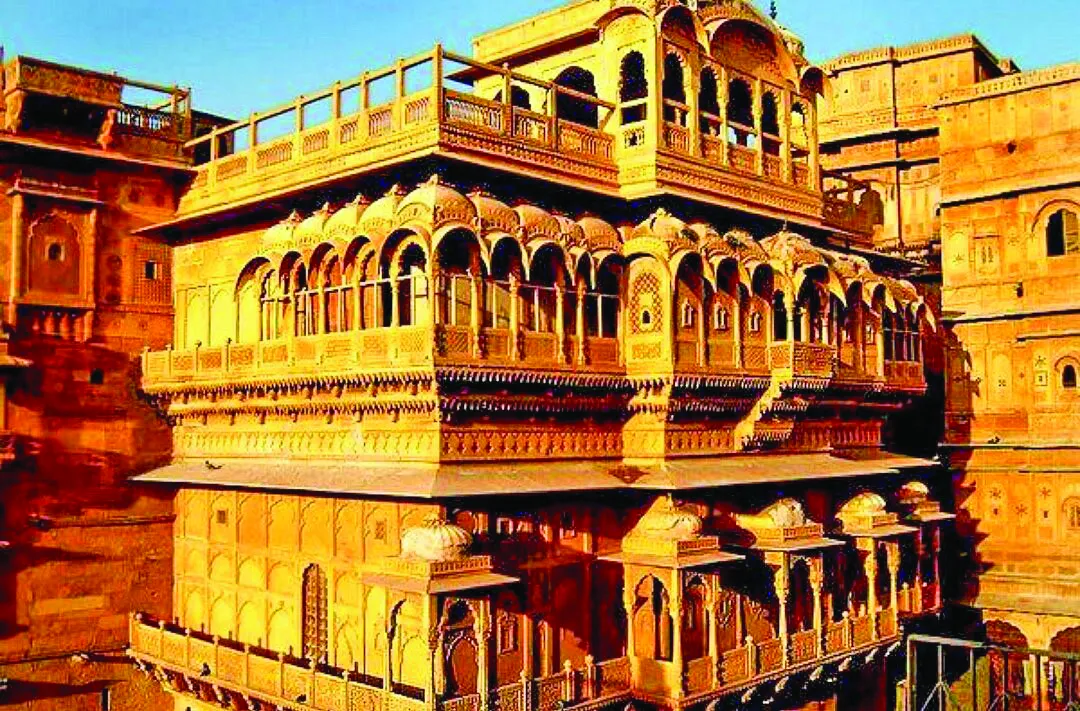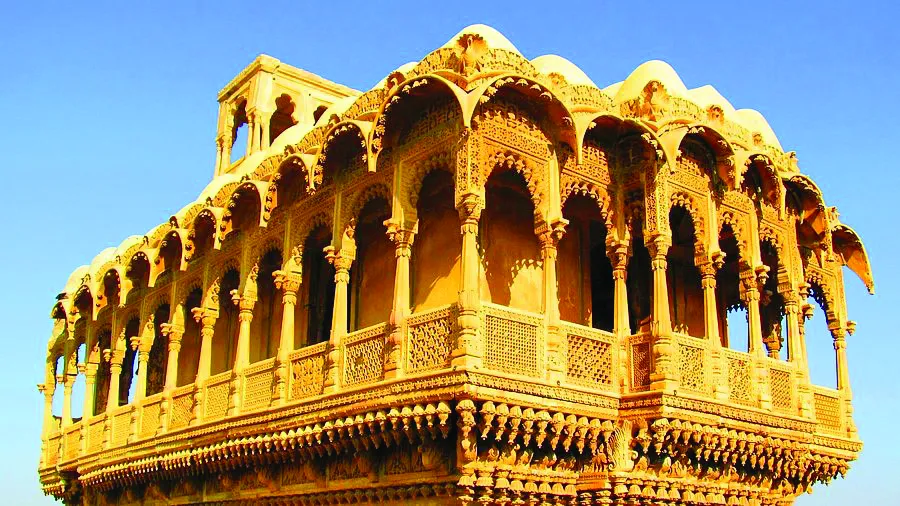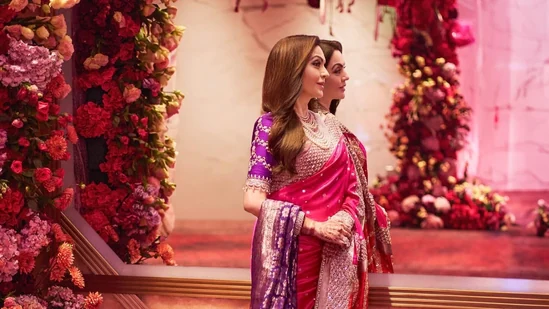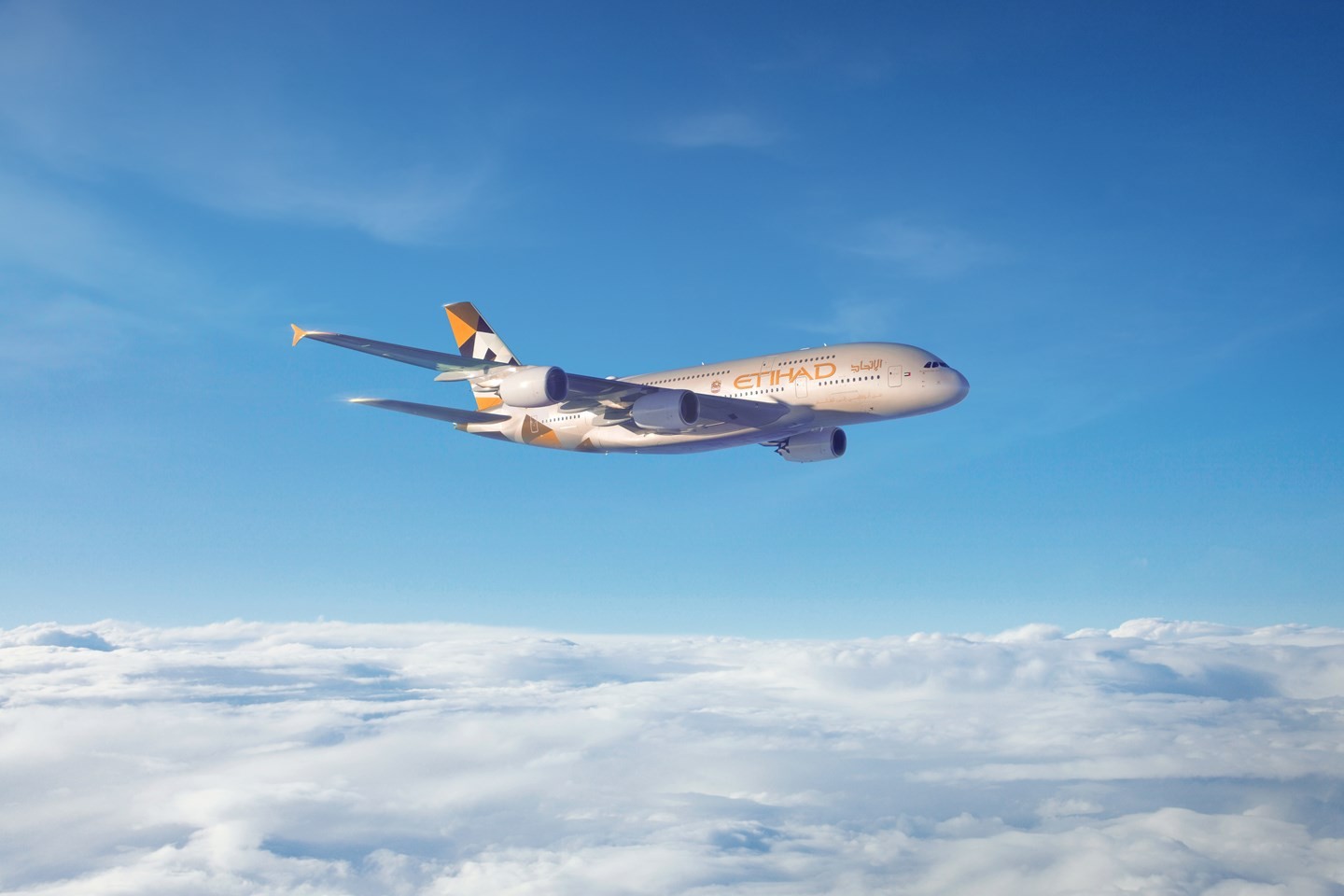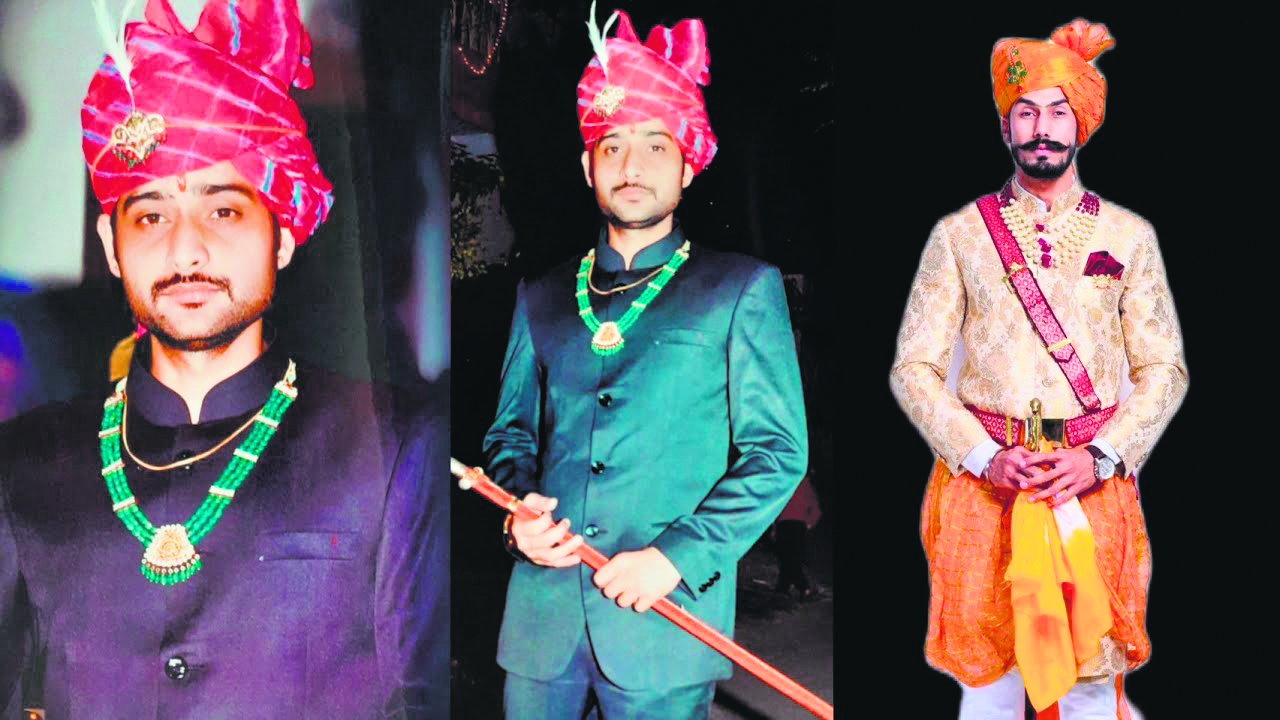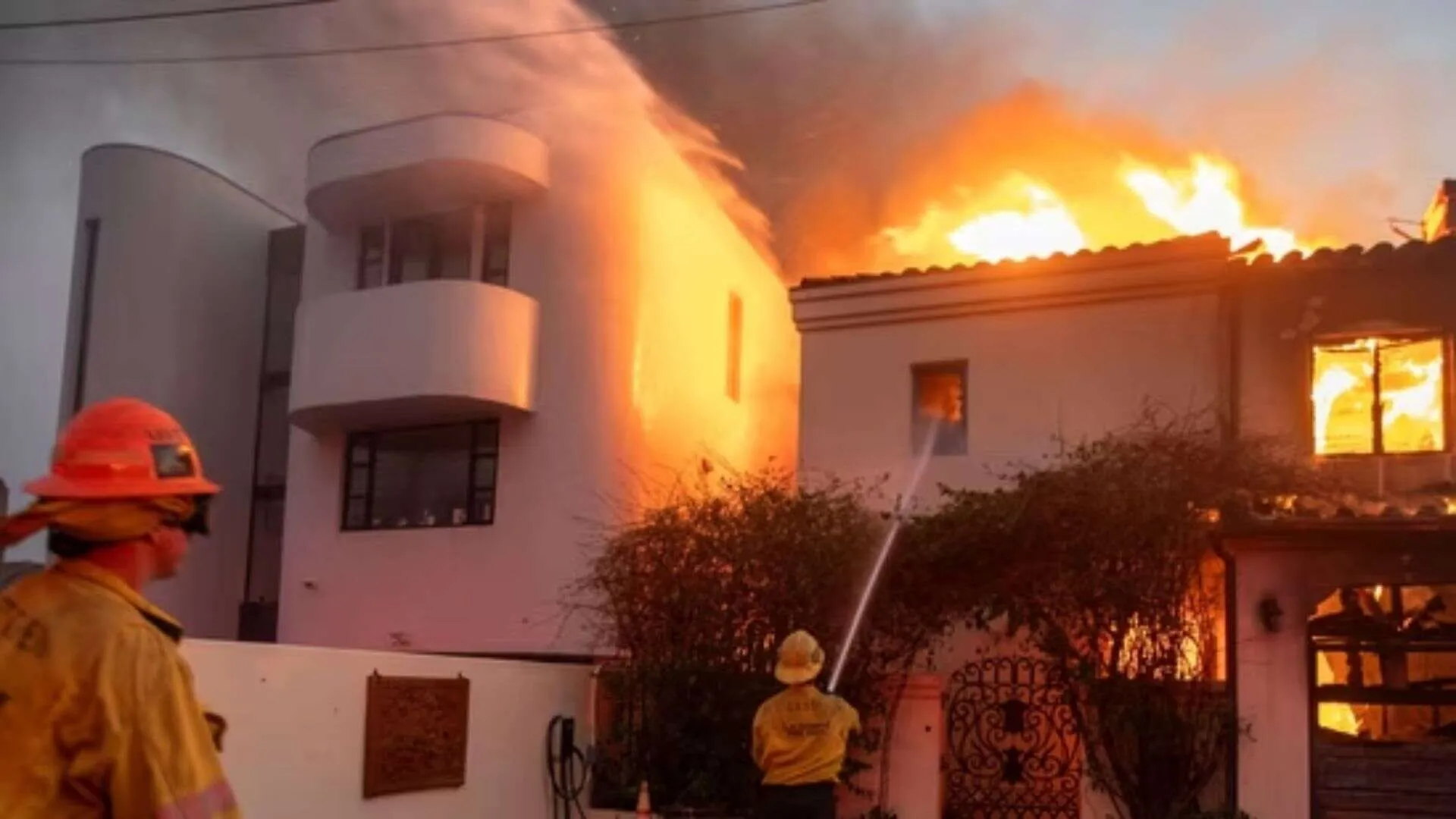The Maratha royals or the Maratha Confederacy were a conglomerate of princely states that ruled a large part of western and southern India, starting from the Deccan Plateau. The empire dates back to the coronation of Chhatrapati Shivaji in 1674. The Maratha warriors were singularly responsible for wiping out the Mughals and also maintaining their strong, rooted identity during the British Raj. Many Maratha states were the highest in the order of the gun salute like Baroda and Gwalior. But many remained insulated in their own world.
Even today, the Marathas remain deeply-rooted, Indian and tradition bound. Their women wear the most spectacular Chanderi and Maheshwari saris that were immortalised by ruling women like Rani Ahilyabai Holkar, Maharani Chimnabai of Baroda and more recently Rajmata Vijaye Raje Scindia of Gwalior. There are many Ravi Varma portraits of women wearing Navsaris draped in nine-yard Chanderis, even mounting horses in them. The men wore pagris, made from stretched and starched Chanderi, the pugri of one state being unique from the other. They were known to wear angarkhas, resplendent with regal, precious buttons.
I had the great fortune of attending a true blue Maratha wedding of Rigvedita Deo, daughter of the Mahurkar family, with Raj Ratna Pratap Deo, scion to the royal state of Nagar Untari, Jharkhand. One of the largest states in Jharkhand, Nagar Untari is a Rajput state, while the Mahurkars were one of the most prominent Sardars (nobles) in the Gwalior state. The father Uday Mahurkar is an author whose book Marching with a Billion on Prime Minister Narendra Modi is a best-seller. A well-read historian, he is known for his vast knowledge on Maratha history and his special insight into the life and times of the Chhatrapati.

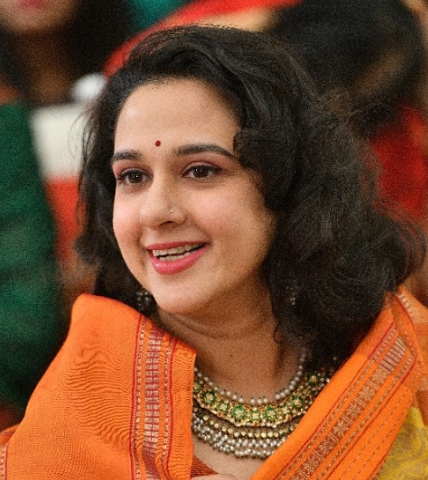
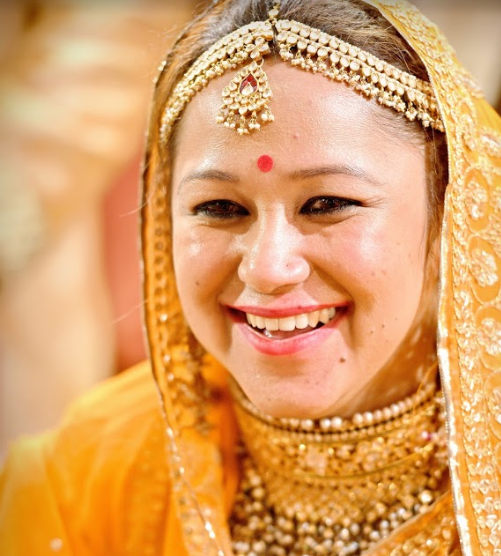
Rigvedita, meanwhile, is a foodie, a restaurateur and now a Kunwarani who is looking at ways to turn the distant state in Jharkhand and its fort into a glorious destination. While her husband, a marketing professional, hopes to market the state for its great historic value.
The wedding was held at the fabled Lakshmi Vilas Palace, home to the Gaekwads of Baroda, and seen as the largest private residence in the world, four-times the size of Buckingham Palace. The festivities began with a tilak ceremony where the groom was greeted by the bride’s family with gifts, an auspicious tilak and many platters full of mithais. The bride meanwhile sat in her chamber, surrounded by her bridesmaid and women of the family dressed in a Chanderi sari. At this time it is considered inauspicious for the bride and the groom to see each other.
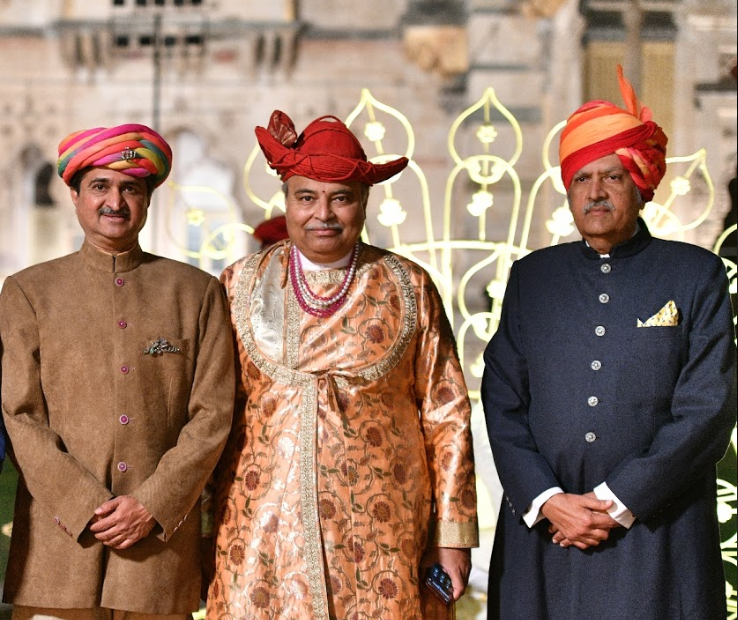
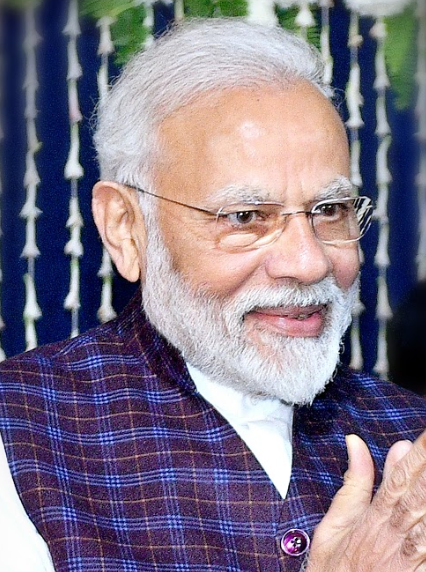
the ceremony.
The wedding itself was resplendent with the bride wearing a beautiful Rajput poshak, which is traditionally gifted by the groom. Her face was totally covered in a veil that she could only raise after the wedding. And the groom came riding the traditional elephant with a battery of folk musicians and dancers leading an all men’s baraat. Yes, women traditionally never attended their son’s wedding.
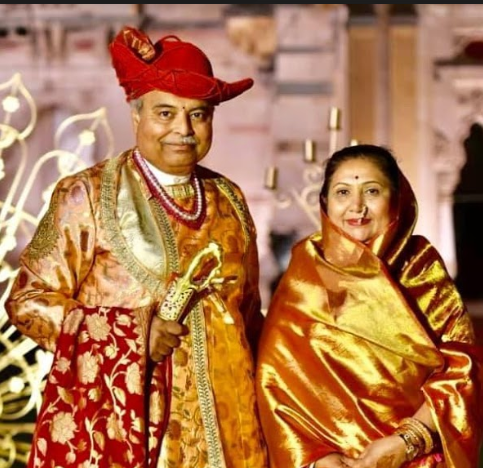
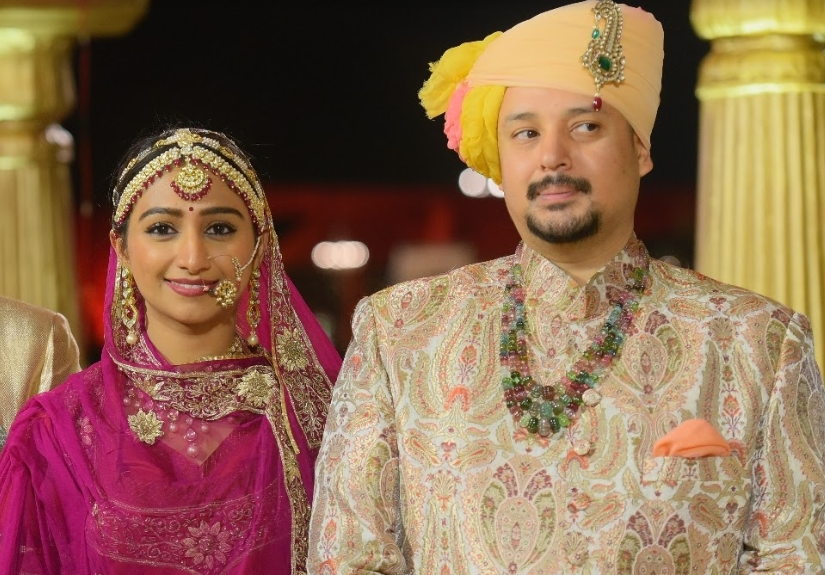
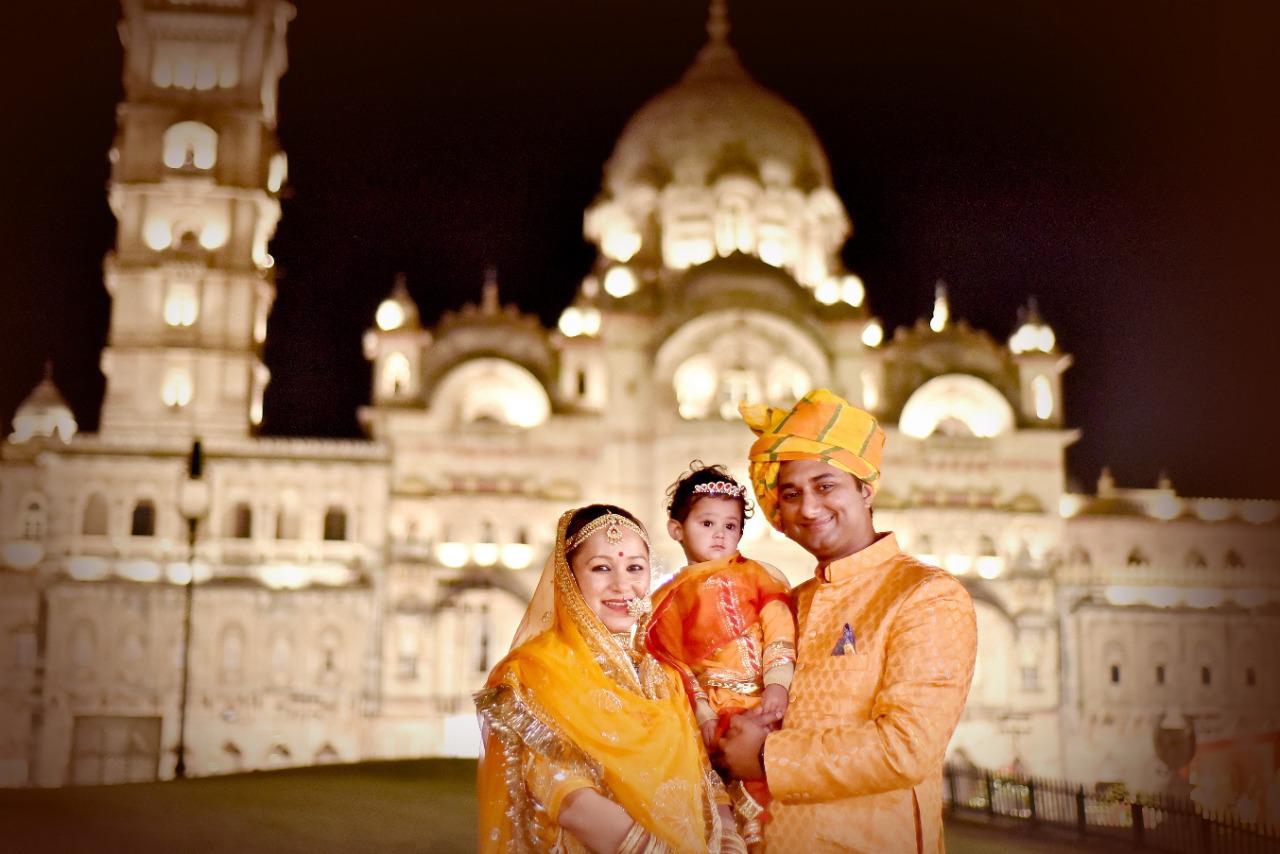
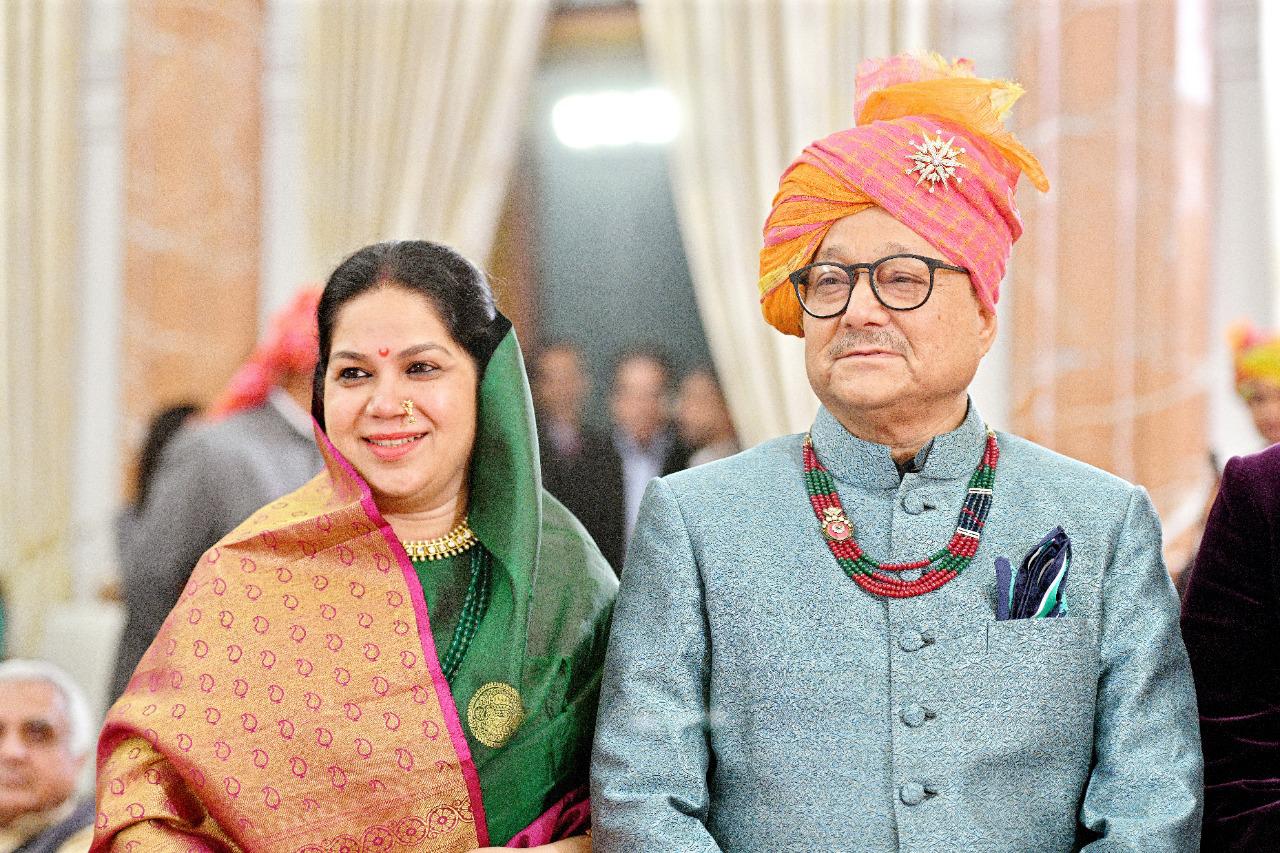
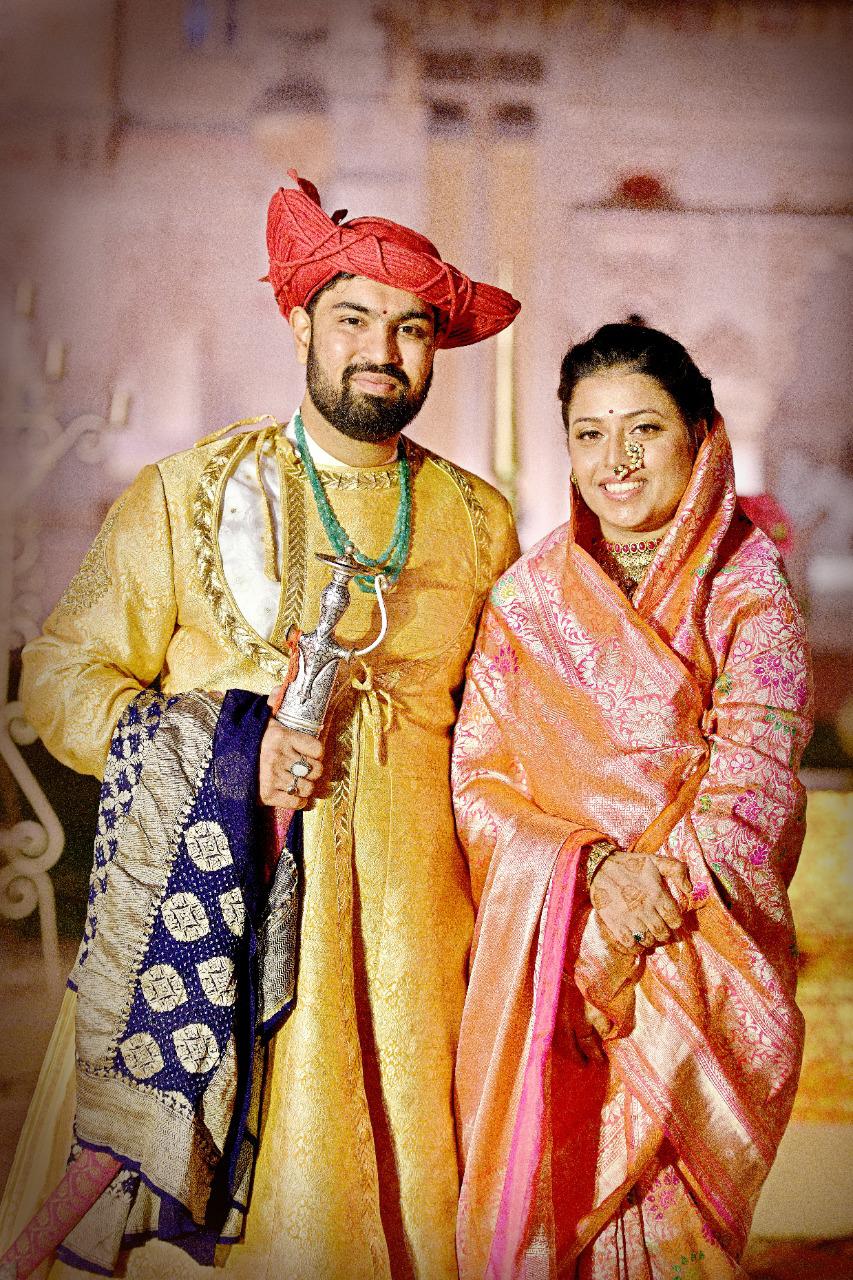
The bride was welcomed with flowers and diya aarti rendered by Hiteshwari Mahurkar, the sister-in-law, as brother Samarjit led her to the dais. Before the wedding the very touching Maratha ceremony of Mangalashtak was held. The couple hidden from each other with a muslin cloth held between the two was blessed by a battery of pundits who recited shlokas. These shlokas are very auspicious and not to be heard by the groom’s mother. The bride’s maternal uncle stood by with a sword in hand, auspiciously protecting her. The guests at this time are each given a silk pouch filled with kesar and rice, which they have to bestow on the couple on completion of every verse. The Marathas have eight pheras around the havan kund and they are known to keep to the wedding traditions very formally.
The palace, with its very maverick Indo-Saracenic architecture and domes, was all lit up, the array of amazing Maratha food and the sheer magnificence of the guests dressed in their royal finery left an impression that could be lilting for life.
The wedding took place early this year, before Covid-19 brought the nation to an unprecedented halt.

